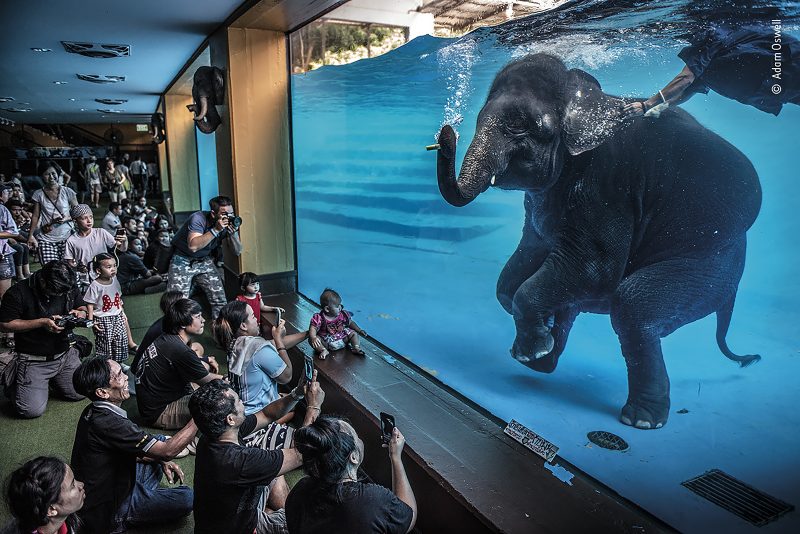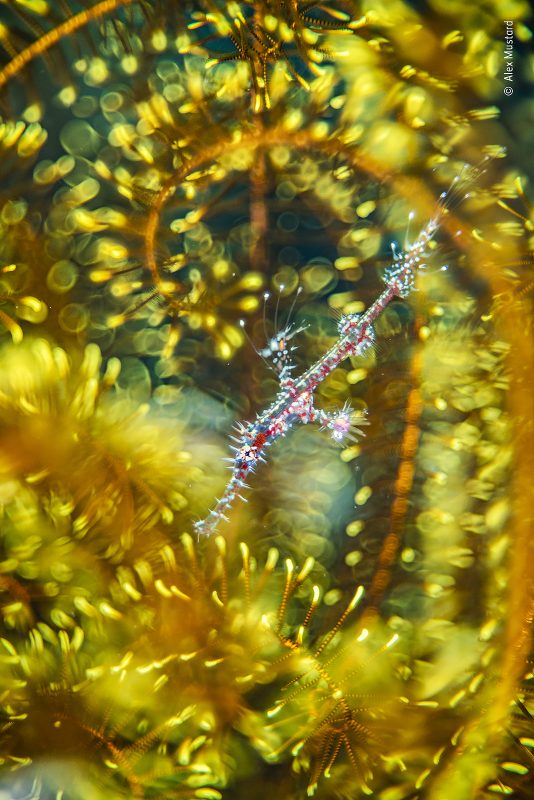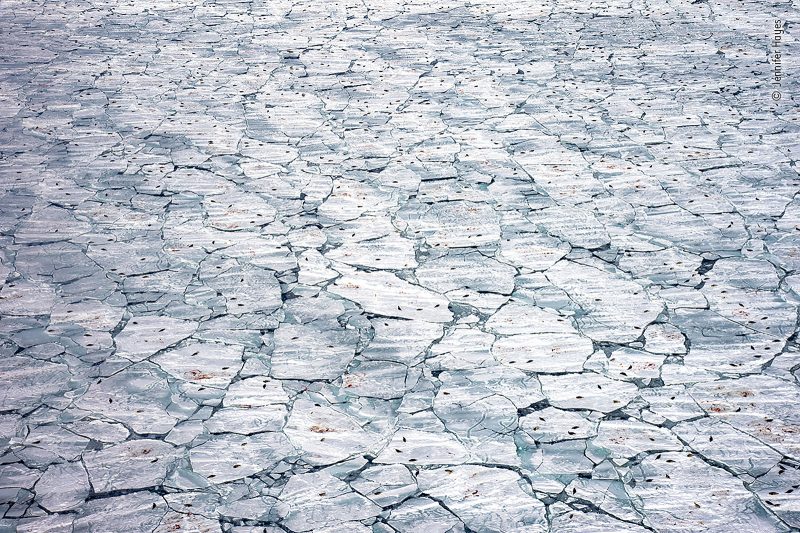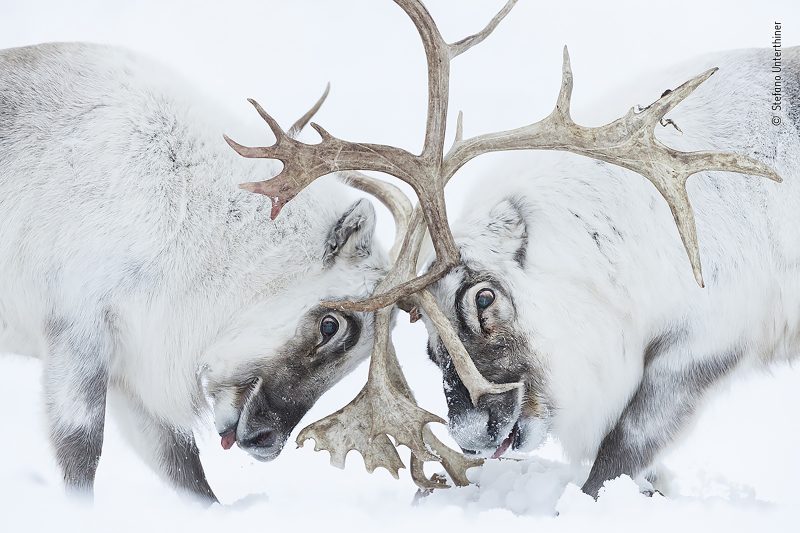Winners of Wildlife Photographer of the Year Announced

The winners of the 57th Wildlife Photographer of the Year competition have been announced. This year, the competition received more than 50,000 entries from 95 countries.
French underwater photographer Laurent Ballesta has taken home the grand prize for his photograph of camouflage groupers exiting their milky cloud of eggs and sperm in Fakarava, French Polynesia.


Every year, for five years, Laurent and his team returned to this lagoon, diving day and night so as not to miss the annual spawning that only takes place around the full moon in July. After dark, they were joined by hundreds of grey reef sharks, hunting the groupers in packs. Overfishing threatens this vulnerable species, but here the fish are protected within a special biosphere reserve.

“The image works on so many levels,” says Rosamund ‘Roz’ Kidman Cox OBE, chair of the judging panel. “It is surprising, energetic, and intriguing and has an otherworldly beauty. It also captures a magical moment –a truly explosive creation of life – leaving the tail-end of the exodus of eggs hanging for a moment like a symbolic question mark.”
The title of Young Wildlife Photographer of the Year was awarded to 10-year-old Vidyun R Hebbar for his photograph “Dome Home”. The image features a tent spider as a tuk-tuk passes by in the background. Vidyun first entered the competition at the age of eight and likes to focus on “the often-overlooked creatures” that live in the streets and parks near his home in Bengaluru, India.

The awarded images will be shown in an exhibition at the Natural History Museum in London, opening Friday 15th October 2021 until 5th June 2022. You can book tickets on the exhibition website.
Here are some of the other category winners.
Photojournalism
Elephant in the room by Adam Oswell, Australia

Adam Oswell (Australia) draws attention to zoo visitors watching a young elephant perform under water.
Although this performance was promoted as educational and as exercise for the elephants, Adam was disturbed by this scene. Organisations concerned with the welfare of captive elephants view performances like these as exploitative because they encourage unnatural behaviour.
Elephant tourism has increased across Asia. In Thailand there are now more elephants in captivity than in the wild. The Covid-19 pandemic caused international tourism to collapse, leading to elephant sanctuaries becoming overwhelmed with animals that can no longer be looked after by their owners.
Nikon D810 + 24–70mm lens 1/640 sec at f2.8 ISO 1250
Natural Artistry
Bedazzled by Alex Mustard, UK

Alex Mustard (UK) finds a ghost pipefish hiding among the arms of a feather star.
Alex had always wanted to capture this image of a juvenile ghost pipefish but usually only found darker adults on matching feather stars. His image conveys the confusion a predator would likely face when encountering this kaleidoscope of colour and pattern.
The juvenile’s loud colours signify that it landed on the coral reef in the past 24 hours. In a day or two, its colour pattern will change, enabling it to blend in with the feather star.
Nikon D850 + Trioplan 100mm f2.8 lens 12mm extension tube ND8 filter FIT +5 close-up lens 1/250 sec at f2.8 ISO 80 Subal housing two Retra strobes
Portfolio Award
Face-off, from Cichlids of Planet Tanganyika by Angel Fitor, Spain

Angel Fitor (Spain) provides an intimate look into the lives of cichlid fishes in Lake Tanganyika.
Two male cichlid fish fight jaw to jaw over a snail shell. Inside the half-buried shell is a female ready to lay eggs. For three weeks Angel monitored the lake bed looking for such disputes. The biting and pushing lasts until the weaker fish gives way. This struggle was over in seconds but lasted just long enough for Angel to get his winning shot.
Nikon D800 + Sigma APO Macro 150mm f2.8
Photojournalist Story Award
The healing touch, from Community care by Brent Stirton, South Africa

Brent Stirton (South Africa) profiles a rehabilitation centre caring for chimpanzees orphaned by the bushmeat trade.
The director of the centre sits with a newly rescued chimp as she slowly introduces it to the others. Young chimps are given one-to-one care to ease their psychological and physical trauma. These chimps are lucky. Less than one in ten are rescued after having seen the adults in their group killed for meat. Most have experienced starvation and suffering.
Canon EOS 5D Mark IV + 16–35mm lens; 1/250 sec at f5.6; ISO 400
Urban Wildlife
The spider room by Gil Wizen, Israel/Canada

Gil Wizen (Israel/Canada) finds a venomous Brazilian wandering spider hiding under his bed.
After noticing tiny spiders all over his bedroom, Gil looked under his bed. There, guarding its brood, was one of the world’s most venomous spiders. Before safely relocating it outdoors, he photographed the human-hand-sized Brazilian wandering spider using forced perspective to make it appear even larger.
Brazilian wandering spiders roam forest floors at night in search of prey such as frogs and cockroaches. Their toxic venom can be deadly to mammals including humans, but it also has medicinal uses.
Canon EOS 7D + 14mm f2.8 lens 1/250 sec at f11 ISO 400 Macro Twin Lite flash
Behaviour – Invertebrates
Spinning the cradle by Gil Wizen, Israel/Canada

Gil Wizen (Israel/Canada) finds a fishing spider stretching out silk from its spinnerets to weave into its egg sac.
Gil discovered this spider under loose bark. Any disturbance might have caused the spider to abandon its project, so he took great care. ‘The action of the spinnerets reminded me of the movement of human fingers when weaving,’ Gil says.
These spiders are common in wetlands and temperate forests of eastern North America. More than 750 eggs have been recorded in a single sac. Fishing spiders carry their egg sacs with them until the eggs hatch and the spiderlings disperse.
Canon EOS 7D + Laowa 100mm f2.8 lens 1/100 sec at f10 ISO 200 Macro Twin Lite flash
Wetlands – The Bigger Picture
Road to ruin by Javier Lafuente, Spain

Javier Lafuente (Spain) shows the stark, straight line of a road slicing through the curves of the wetland landscape.
By manoeuvring his drone and inclining the camera, Javier dealt with the challenges of sunlight reflected by the water and ever-changing light conditions. He captured the pools as flat colours, varying according to the vegetation and mineral content.
Dividing the wetland in two, this road was constructed in the 1980s to provide access to a beach. The tidal wetland is home to more than a hundred species of birds, with ospreys and bee-eaters among many migratory visitors.
DJI Mavic 2 Pro + Hasselblad L1D-20c + 10.3mm f2.8 lens 1/500 sec at f2.8 (+0.3 e/v) ISO 100
Oceans – The Bigger Picture
Nursery meltdown by Jennifer Hayes, USA

Jennifer Hayes (USA) records harp seals, seal pups and the blood of birth against melting sea ice.
Following a storm, it took hours of searching by helicopter to find this fractured sea ice used as a birthing platform by harp seals. ‘It was a pulse of life that took your breath away,’ says Jennifer.
Every autumn, harp seals migrate south from the Arctic to their breeding grounds, delaying births until the sea ice forms. Seals depend on the ice, which means that future population numbers are likely to be affected by climate change.
Nikon D4 + 24–120mm f4 lens 1/640 sec at f9 ISO 200
Behaviour – Amphibians and Reptiles
Where the giant newts breed by João Rodrigues, Portugal

João Rodrigues (Portugal) is surprised by a pair of courting sharp-ribbed salamanders in the flooded forest.
It was João’s first chance in five years to dive in this lake as it only emerges in winters of exceptionally heavy rainfall, when underground rivers overflow. He had a split second to adjust his camera settings before the newts swam away.
Found on the Iberian Peninsula and in northern Morocco, sharp-ribbed newts (or salamanders) are named after their defence strategy. They use their pointed ribs as weapons, piercing through their own skin and picking up poisonous secretions, then jabbing them into an attacker.
Canon EOS 5D Mark IV + Tokina 10–17mm f3.5–4.5 lens at 16mm 1/200 sec at f13 ISO 320 Aquatica housing two INON Z-330 flashes
Animal Portraits
Reflection by Majed Ali, Kuwait

Majed Ali (Kuwait) glimpses the moment a mountain gorilla closes its eyes in the rain.
Majed trekked for four hours to meet Kibande, an almost-40- year-old mountain gorilla. ‘The more we climbed, the hotter and more humid it got,’ Majed recalls. As cooling rain began to fall, Kibande remained in the open, seeming to enjoy the shower.
Mountain gorillas are a subspecies of the eastern gorilla, and are found at altitudes over 1,400 metres in two isolated populations – at the Virunga volcanoes and in Bwindi. These gorillas are endangered due to habitat loss, disease, poaching and habitat disruption caused by human activity.
Nikon Z6 + 70–200mm f2.8 lens at 200mm 1/320 sec at f6.3 ISO 640
Rising Star Portfolio Award
Cool time, from Land time for sea bears by Martin Gregus, Canada / Slovakia

Martin Gregus (Canada/Slovakia) shows polar bears in a different light as they come ashore in summer.
On a hot summer’s day, two female polar bears took to the shallow intertidal waters to cool off and play. Martin used a drone to capture this moment. For him, the heart shape symbolises the apparent sibling affection between them and ‘the love we as people owe to the natural world’.
DJI Mavic 2 Pro + Hasselblad L1D-20c + 28mm f2.8 lens; 1/400 sec at f3.2; ISO 100
Behaviour – Birds
The intimate touch by Shane Kalyn, Canada

Shane Kalyn (Canada) watches a raven courtship display.
It was midwinter, the start of the ravens’ breeding season. Shane lay on the frozen ground using the muted light to capture the detail of the ravens’ iridescent plumage against the contrasting snow to reveal this intimate moment when their thick black bills came together.
Ravens probably mate for life. This couple exchanged gifts – moss, twigs and small stones – and preened and serenaded each other with soft warbling sounds to strengthen their relationship or ‘pair bond’.
Nikon D500 + 200–500mm f5.6 lens at 420mm 1/1250 sec at f7.1 ISO 900
Behaviour – Mammals
Head to head by Stefano Unterthiner, Italy

Stefano Unterthiner (Italy) watches two Svalbard reindeer battle for control of a harem.
Stefano followed these reindeer during the rutting season. Watching the fight, he felt immersed in ‘the smell, the noise, the fatigue and the pain’. The reindeer clashed antlers until the dominant male (left) chased its rival away, securing the opportunity to breed.
Reindeer are widespread around the Arctic, but this subspecies occurs only in Svalbard. Populations are affected by climate change, where increased rainfall can freeze on the ground, preventing access to plants that would otherwise sit under soft snow.
Nikon D5 + 180–400mm f4 lens at 400mm 1/640 sec at f4 ISO 3200
Animals in their Environment
Grizzly leftovers by Zack Clothier, USA

Zack Clothier (USA) discovers a grizzly bear has taken an interest in his camera trap.
Zack decided these bull elk remains were an ideal spot to set a camera trap. Returning to the scene was challenging. Zack bridged gushing meltwater with fallen trees, only to find his setup trashed. This was the last frame captured on the camera.
Grizzlies, a subspecies of brown bears, spend up to seven months in torpor – a light form of hibernation. Emerging in spring, they are hungry and consume a wide variety of food, including mammals.
Nikon D610 + 18–35mm f3.5–4.5 lens at 25mm 1/160 sec at f10 (-1.7 e/v) ISO 1000 two Nikon SB-28 flashes self-made camera-trap system





